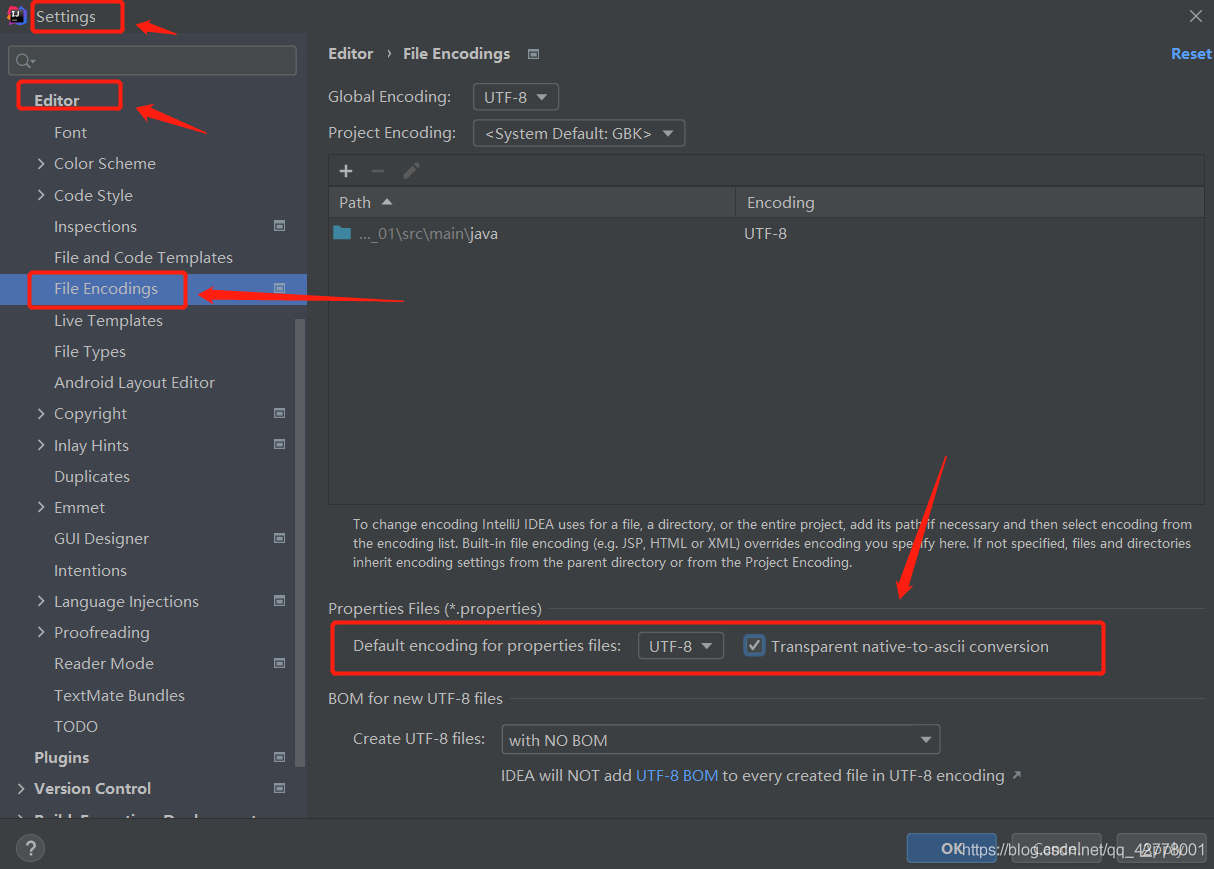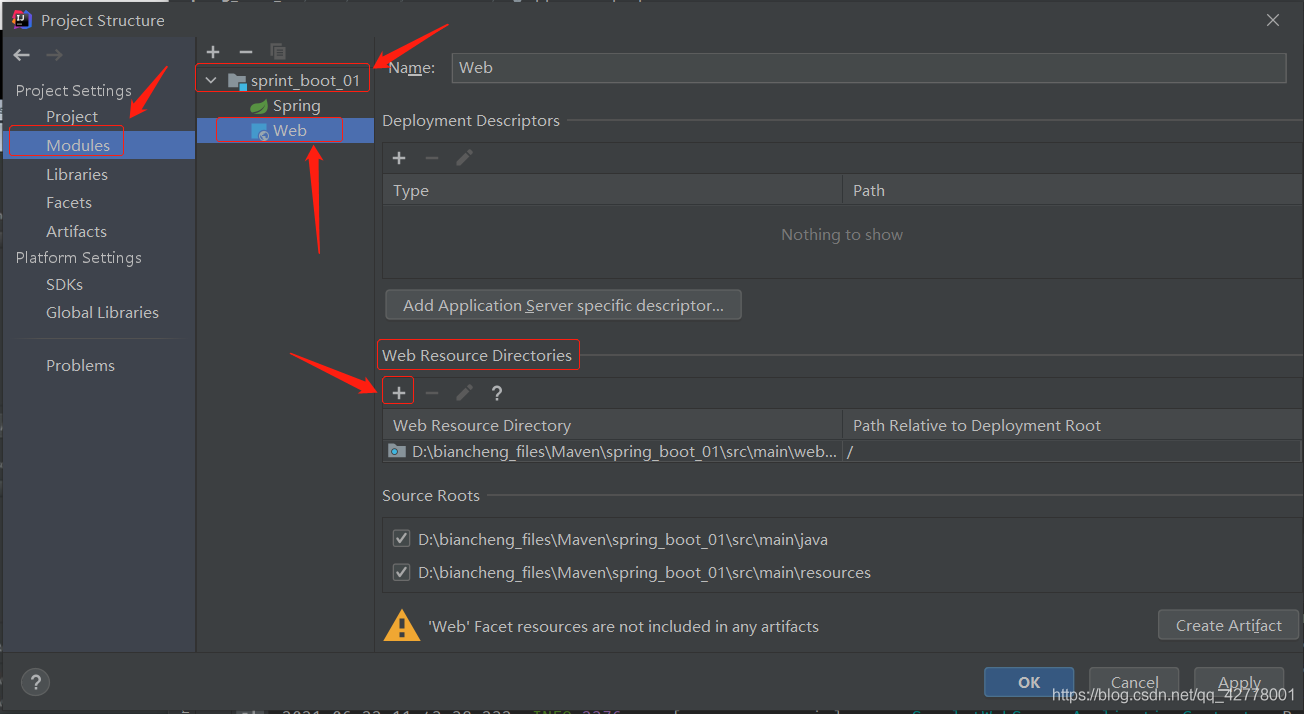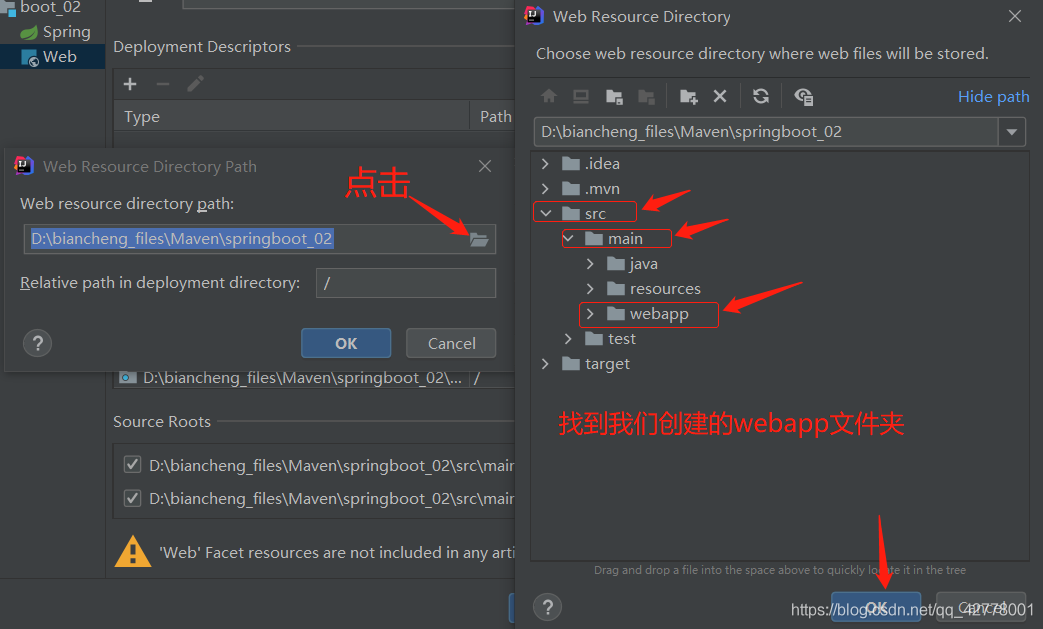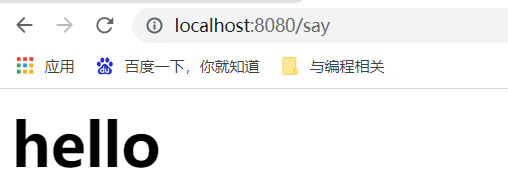入门Springboot
项目创建在IDEA中创建即可。
注意点:
1、所有文件都需要放在 :
Application文件的同级或下级目录中
2、application.properties 为 spring-boot 项目主核心配置文件,且只能有一个核心配置文件。

3、多环境下的核心配置文件的使用, 文件名必须以 application- 开头!
application-xxx.properties

(1)开发环境
# 开发环境配置文件 server.port=9000 server.servlet.context-path=/
(2)测试
# 测试环境配置文件
(3)生产环境
# 生产环境配置文件 server.port=7000
在主核心配置文件中激活我们自定义的配置文件:
#激活我们编写的application-xxx.properties配置文件 spring.profiles.active=dev
4、@Value 注解
spring-boot核心配置文件 自定义的配置属性,如何获取
下边方式只能一个一个属性获取!
比如:在application.properties文件中自定义了一个配置 website=http://www.baidu.com
在项目中获取到这个自定义的配置:
使用注解 @Value("${website}")
也可以写一个默认值,如果配置项没有,会使用默认值@Value("${website: 默认值}")
package com.lxc.sprint_boot_01.web;
import org.springframework.beans.factory.annotation.Value;
import org.springframework.stereotype.Controller;
import org.springframework.web.bind.annotation.RequestMapping;
import org.springframework.web.bind.annotation.ResponseBody;
import javax.management.ValueExp;
import javax.print.DocFlavor;
// 声明控制层
@Controller
public class IndexController {
@Value("${website:values}")
private String name; // 此时website值会赋给name属性
@RequestMapping(value = "/self")
@ResponseBody
public String self() {
return name;
}
}
5、@Component 和 @ConfigurationProperties(prefix="xxx") 注解
spring-boot核心配置文件 将我们自定义的配置属性,映射为一个对象(获取的是一个对象),使用这种方式的前提:配置文件中的属性必须要写前缀!
application.properties文件
# 属性前边必须要有前缀,我这里前缀是user user.name=lxc user.password=123456
config -> user.java文件

package com.lxc.sprint_boot_01.config;
import org.springframework.boot.context.properties.ConfigurationProperties;
import org.springframework.stereotype.Component;
@Component // 将此类交给spring容器管理
@ConfigurationProperties(prefix = "user") // 配置属性注解,参数前缀必须有值,值为我们定义的前缀
// 配置完上边的两个注解,下边把配置文件中的属性映射到下边类中去
public class User {
private String username;
private String password;
public String getUsername() {
return username;
}
public void setUsername(String username) {
this.username = username;
}
public String getPassword() {
return password;
}
public void setPassword(String password) {
this.password = password;
}
}
调用属性
package com.lxc.sprint_boot_01.web;
import com.lxc.sprint_boot_01.config.User;
import org.springframework.beans.factory.annotation.Autowired;
import org.springframework.beans.factory.annotation.Value;
import org.springframework.stereotype.Controller;
import org.springframework.web.bind.annotation.RequestMapping;
import org.springframework.web.bind.annotation.ResponseBody;
import javax.management.ValueExp;
import javax.print.DocFlavor;
import java.util.HashMap;
import java.util.Map;
// 声明控制层
@Controller
public class IndexController {
@Autowired // @Autowired 把User类注入进来
private User user;
@RequestMapping(value = "/many")
@ResponseBody
public String many() {
return "user为:"+user.getUsername() + ",密码为:"+user.getPassword();
}
}

6、加上@ConfigurationProperties注解,会出现上边红色警告,想解决此问题需要加一个依赖包:

<dependency>
<groupId>org.springframework.boot</groupId>
<artifactId>spring-boot-configuration-processor</artifactId>
</dependency>
7、如果在application.properties中有中文,会出现乱码,在IDEA中解决中文乱码的问题:

8、在配置文件中属性的键值对不能有空格,否则解析会有问题!
9、spring-boo集成JSP
首先在main文件夹下创建 webapp文件夹,然后 点击 file -> project structure -> Modules 如下图:

然后在弹出的对话框中点击右边文件,找到我们刚才创建的webapp文件夹,确定即可,具体如下:

此时,webapp会变为如下样子。

配置pom.xml文件
(1)首先引入spring-boot内嵌的tomcat对jsp的解析依赖,不添加解析不了jsp
<!--引入spring-boot内嵌的tomcat对jsp的解析依赖,不添加解析不了jsp-->
<dependency>
<groupId>org.apache.tomcat.embed</groupId>
<artifactId>tomcat-embed-jasper</artifactId>
</dependency>
(2)spring-boot默认使用的是前端引擎thymeleaf,现在我们要使用springboot继承jsp,需要手动 指定jsp最后编译的路径,而且springboot继承jsp的路径是springboot规定好的位置: META-INF/resources
<build>
<!--spring-boot默认使用的是前端引擎thymeleaf,现在我们要使用springboot继承jsp,需要手动指定jsp最后编译的路径,而且springboot继承jsp的路径是springboot规定好的位置:META-INF/resources-->
<resources>
<resource>
<!--源文件-->
<directory>src/main/webapp</directory>
<!--指定编译路径:-->
<targetPath>META-INF/resources</targetPath>
<!--指定源文件夹中的哪些资源需要被编译-->
<includes>
<include>*.*</include>
</includes>
</resource>
</resources>
<plugins>
<!-- ・・・ -->
</plugins>
</build>
最后一步:在 application.properties 中配置视图解析器
# 配置视图解析器 spring.mvc.view.prefix=/ # 前缀 spring.mvc.view.suffix=.jsp # 后缀
创建.jsp页面,测试:
<%@ page contentType="text/html;charset=UTF-8" language="java" %>
<html>
<head>
<title>Title</title>
</head>
<body>
<h1>${msg}</h1>
</body>
</html>
package com.lxc.boot_02;
import org.springframework.stereotype.Controller;
import org.springframework.web.bind.annotation.RequestMapping;
import org.springframework.web.servlet.ModelAndView;
@Controller
public class controller {
// 写法一:
@RequestMapping(value="/say")
public ModelAndView say() {
ModelAndView mv = new ModelAndView();
// 给视图传值
mv.addObject("msg", "hello");
// 设置 最终视图的名称
mv.setViewName("say");
return mv;
}
// 写法二:把视图和模型拆分开,返回一个视图(return的是视图的名字)
@RequestMapping(value = "/index")
public String index(Model model) {
model.addAttribute("msg", "lxc;");
return "say";
}
}
写法一:

写法二:

到此这篇关于Springboot快速入门教程的文章就介绍到这了,更多相关入门Springboot内容请搜索服务器之家以前的文章或继续浏览下面的相关文章希望大家以后多多支持服务器之家!
原文链接:https://blog.csdn.net/qq_42778001/article/details/118101736















